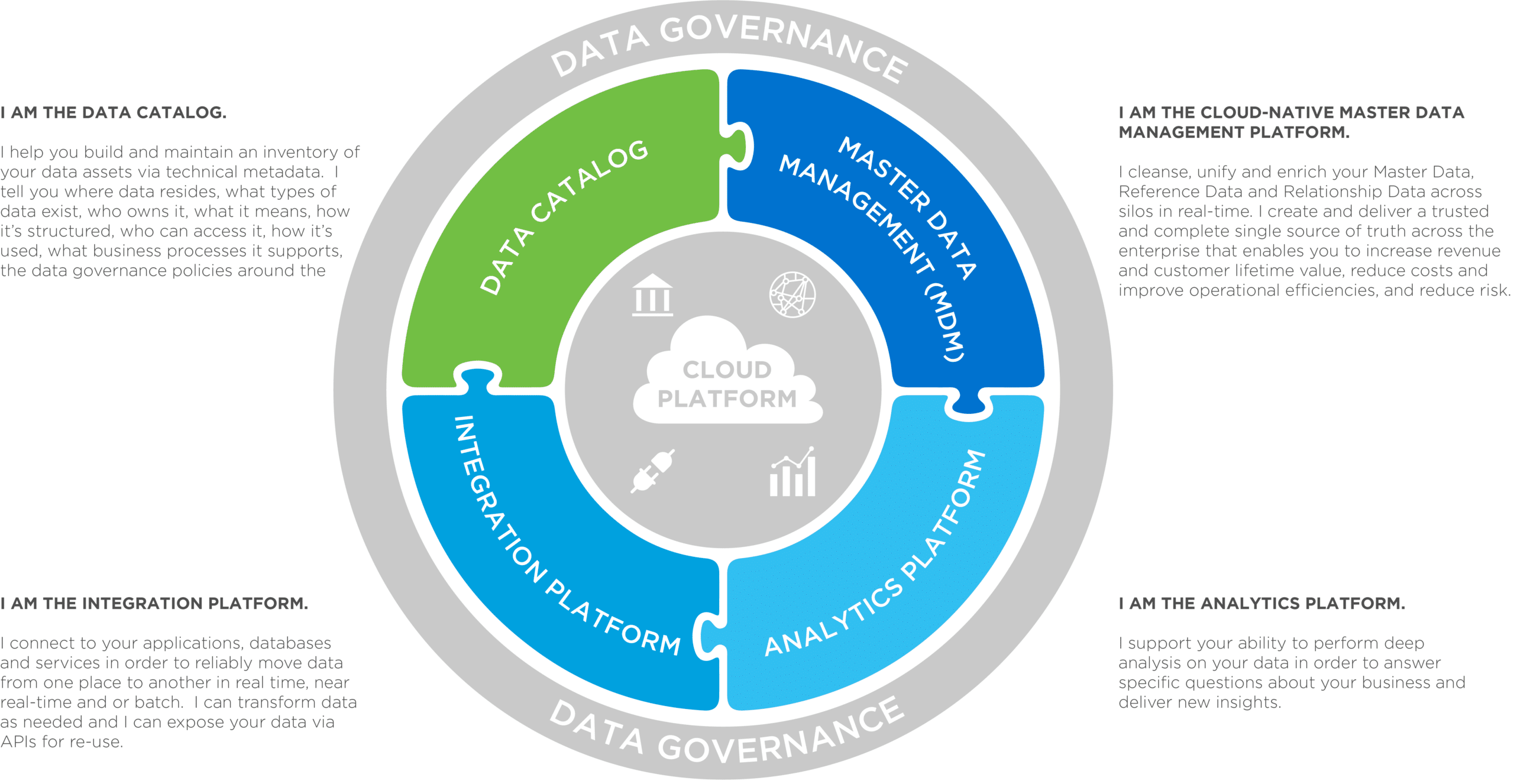3 Good Reasons Why Data Governance is the New Cool

Data governance has not had a very exciting reputation over the years. Dare I say it, many have regarded it as rather dull and begrudgingly accepted it as a “necessary evil”, even those who apply it.
Data Governance has typically been considered the job of IT and, until recently, it was mostly avoided by business users. Now, it seems to have undergone a transformation over the last few years. The change is being driven by a number of factors including:
- Disappointing outcomes for organisations as business leaders attempt to drive large-scale AI/ML and analytics initiatives based on bad quality data
- A lack of understanding about what data governance is and the value it offers
- Where data governance fits with data management technology that is currently available in an increasingly cloud-based world
What we see in our conversations with business leaders is that Data Governance is starting to be understood as an essential ingredient in delivering the “sexy outcomes” – delivered by turning analytics into business value – that their organisations need to compete.
Here are 3 reasons why data governance is essential:
1) Data governance helps you do the cool stuff
This was a tagline given to me by Nicola Askham (The Data Governance Coach). It comes from a data governance team that was struggling to get on people’s calendars because data governance just wasn’t regarded as a priority. They came up with this tagline to remind everyone that data governance is what generates the exciting analytics. This led them to gain the mind share needed to complete the tasks of determining what data they had, where it was located and the quality of that data. Then they could start to build out the data governance programme.
In another example, Nicola spoke to a Data Governance Manager who had recently been hired on the recommendation of a Data Scientist within the organisation. This Data Scientist had spent six months trying to deliver a high-profile data and analytics project but could not optimise it because the data was of such bad quality. So, he recommended they hire someone to take control of their organisational data governance in order to drive better analytical and business value-based outcomes.
A recent Forrester article by Michele Goetz emphasises this point:
“Throw out the notion that low-level data governance begins with IT. Data governance is neither an IT project nor a box on the enterprise data strategy and architecture model. The right place to assess the need for a data governance initiative and program is linked to the business needle that you need to move.”
With AI and ML as the hottest properties in the data and analytics world right now, it has never been more true that if you want the best, most exciting outcomes, you must have an enterprise approach to data strategy and governance.
2) Data Governance can deliver the big bucks
A McKinsey report about how to design data governance processes to deliver value, makes the point that while business executives understand that their data is valuable, many are not yet as clear on why it needs to be governed or how that will help. The report expounds on the “quality versus quantity” debate in the context of enterprise data and explains that without data:
“there can be no digital transformation to propel the organisation past competitors. There are no analytics driving new sources of revenue. Even running the basic business well isn’t possible….”
But
“….for data to fuel these initiatives, it must be readily available, of high quality, and relevant. Good data governance ensures data has these attributes, which enable it to create value.”
So what is data governance? According to Frank Cerwin it is:
“The creation of rules, the execution of those rules, and the adjudication of any violation of the rules”
But Data Governance is often confused with master data management. In truth they are very closely related but separate disciplines. Cerwin’s definition of Master Data is:
“Master data is a type of data that describes subjects related to the ‘who,’ ‘what,’ and ‘where’ in business transactions, communications, and events. The ‘who’ could be a customer or an employee, the ‘what’ could be a product or service, and the ‘where’ could be a store, office, or a virtual location.”
Cerwin and Askham are aligned in the view that you cannot have decent master data management without data governance because it is data governance that determines the rules and operational processes for the master data. However, in either case, it can be very hard to prove the value.
Master data management is a critical part of a comprehensive business strategy because it provides the information on people, what they buy, what they research and which online and physical stores they visit and all the connections between them then this helps businesses to personalise experiences and optimise their services. The role of master data governance, according to Cerwin, is that it “ensures the privacy, quality, and fit-for-purpose[ness] of the master data within the initiative”
The McKinsey report the value of data governance is made very clear:
“Leading firms have eliminated millions of dollars in cost from their data ecosystems and enabled digital and analytics use cases worth millions or even billions of dollars. Data governance is one of the top three differences between firms that capture this value and firms that don’t. In addition, firms that have underinvested in governance have exposed their organisations to real regulatory risk, which can be costly.”
3) Data governance has some really amazing pals
It’s definitely a confusing landscape – particularly when cloud platform vendors are encouraging clients to bring everything onto their infrastructure and it’s hard to tell what functionality is best undertaken with specialist tools. Many data management technology solutions are now cloud-enabled and some of the most established are also cloud-native and offered as a full SaaS solution. It has certainly been acknowledged that cloud platforms offer a huge opportunity to deliver those “sexy outcomes” we covered earlier. Quoting an SDG group report on 2021 trends:
“When it comes to analytics, the Cloud is resolving scalability issues related to the volume of data and the number of users. It enhances collaboration by bringing data closer to the business and enables data marketplaces. The Cloud also makes Artificial Intelligence more accessible because it enables Machine Learning, Natural Language Processing, and Facial Recognition capabilities.”
But the Cloud is neither a solution nor a tool, it’s a platform. And Data Governance and Master Data Management are not tools either – they are processes. The tools in the data management space tend to fall into different areas – with some overlap – but most enterprises all need at least 4 main components:
- Data Integration Tools
- Data Catalog Tools
- Master Data Management Tools
- Analytics Tools
Global enterprises will have started with one or more of these and will all be at different stages of their journeys. Like Data Governance, any data management project should start where there is a business need to “move the needle” and therefore drive the funding and delivery of the project.
I spoke to Martin Treder, a well-known author and speaker, about data management and how organisations could determine the business need and therefore justify the budget for a data project. He said:
“Unlike operational efficiency gains, data projects often have a hard time quantifying their value-add. And, unfortunately, the time of easy funding for data projects is over. Organisations want to see the return on investment. This even applies to respected topics such as Artificial Intelligence or blockchain, even more so for bread-and-butter disciplines like Master Data Management.”
Martin also pointed out that knowing your data initiative is worth each cent invested is not sufficient. You need to convince other people, most of whom might not speak “data”. To succeed in this endeavour, you require new strategies for example combining “enabler” projects with subsequent “exploration” projects to explain the value of the combination.
Examples of these could include the implementation of a new web strategy based on data-driven evaluation of user behaviour or an improved product labelling process based on improved Master Data handling. The cause-effect chain can be demonstrated far more convincingly if cause and effect are part of the same project.
There are many technology tools that are almost always part of this journey towards determining business value. However, the language used to describe them and the sometimes overlapping capabilities can be confusing for many – particularly when they may have expected their cloud platform to provide some/all of them.In order to simplify the components of data management for our clients, we have put together the following diagram based on how we talk to clients about a “best-of-breed” approach based on the simplest integration possible (API-led).

Your organisation may well have started projects in one or more of these areas and will need to consider the others in order to drive maximum business value. In addition, even if you have capability in some of these areas, you may need to consider an alternative provider if your earlier choices have proven to be non-scalable, difficult to integrate or have become legacy, siloed systems.
Even if you have moved to a new cloud platform, your enterprise will need to consider specialist data management tools and solutions according to a 2021 survey on why organisations are not making better use of their data:
“The bad news is that 49% are using tools included with their cloud data platform, and many of these tools lack the mature cataloging, data quality, governance and privacy services that are essential to most large organisations.”
As you see from the diagram, data governance is part of all 4 data management processes we have identified and should be an inherent process within all of them.
Another tip from Martin Treder is for the scenario where all benefits of your data governance or MDM projects are attributed to other projects that make use of them or to the other tools involved. He points out that, as companies usually don’t allow for double-counting, it might be hard to prove the value of your data projects. In this case he recommends that you systematically determine the “cost of NOT doing it”. This allows you to add up the value of all those projects and activities that capitalise on your data-powered findings or enablers. In his book “Chief Data Officer Management Handbook”, this approach even works with little things:
“Don’t simply ask “What’s the value of this report?” Instead, ask “What would be the impact of you NOT having it?””
Next steps
If you tie these data management initiatives to business value and institute strong data governance as you progress, then once you have navigated the complexity of people, process and technology, the rewards will mean your enterprise is better, faster and smarter than the competition.
According to Michele Goetz of Forrester:
“Even for objectives like regulatory compliance, obtaining “better” data via a data governance program should translate to revenue-based and growth-generating outcomes. For example, identity management and preference management need to align with privacy regulations, but they also improve customer understanding and yield better results from loyalty programs and targeted sales initiatives. Thus, business risk is addressed while also serving business upside.”
Bringing it all together
Employing a “best-of-breed approach” will help you meet your Data Governance goals, and with that in mind, we are on hand at Reltio to help you get there. While Reltio offers a compelling Master Data Management solution, we understand the need for you to integrate it with your data integration, analytics and catalog tools. Talk to us today to learn how we can help develop your Data Governance strategy and truly do the “sexy” stuff.
Now if that’s not cool (in a grown-up, business-focused way), then I don’t know what is!
Get in touch via https://www.reltio.com/contact-us/